Juniper berries – which are actually cones, not berries at all – are incredibly versatile. They can be used to flavor drinks, savory dishes, and desserts.
They can also be used medicinally, or even to make a sourdough starter!
The trees that produce them thrive across the Northern Hemisphere, and if you live somewhere with extreme temperature variations between heat and cold, and long periods of dry weather, they probably grow happily in your neck of the woods.
If so, you’ve probably noticed them around. Maybe you’ve even wondered how to harvest the berries.
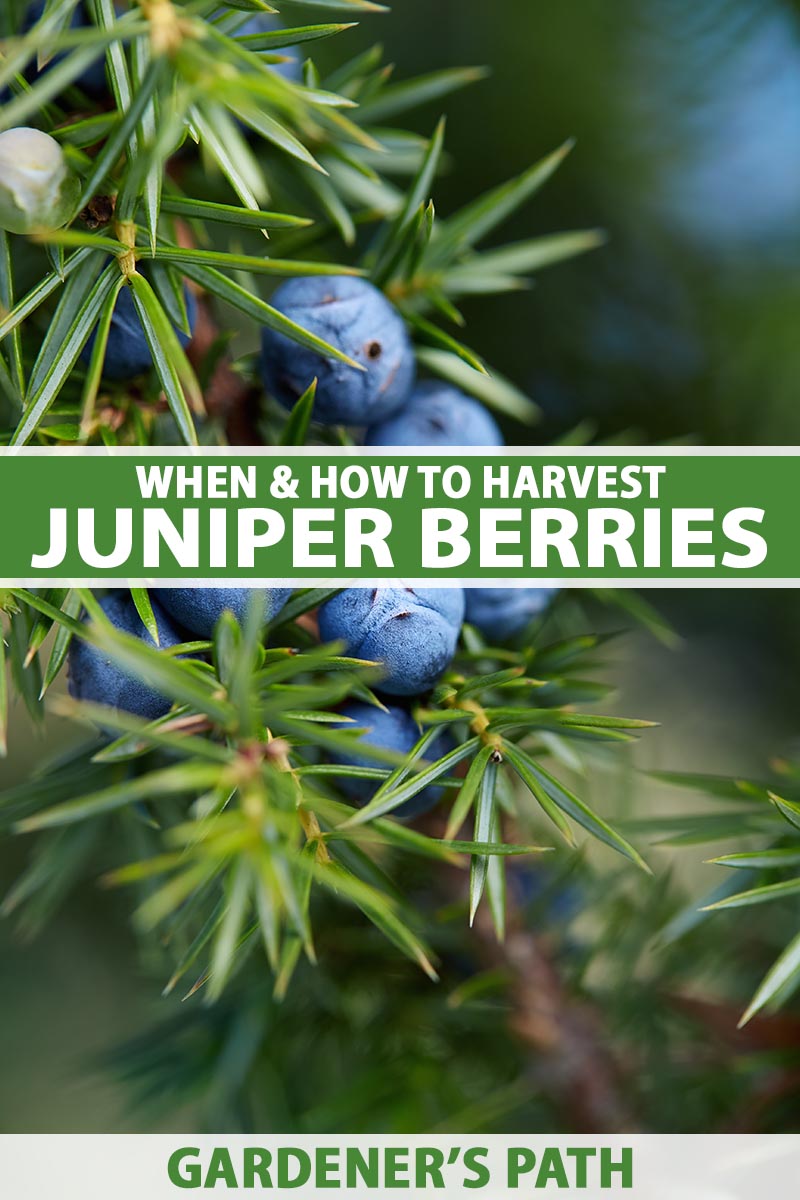
We link to vendors to help you find relevant products. If you buy from one of our links, we may earn a commission.
That’s what this guide will address. We’ll help you figure out when to harvest, how to do it, and how to preserve the fruits once you’ve gotten your hands on them.
But first, you need to ensure that you have a species that’s good to cook with or use in medicine.
Here’s what to expect:
What You’ll Learn
They aren’t going to harvest themselves! Let’s get to work!
Identify Your Species
Before you go nabbing the cones to eat or use medicinally, be sure of the species you are harvesting from.
Almost all species that are native to the US are totally fine to eat, but there are a few species from Europe and China that are poisonous, such as Juniperus sabina and J. oxycedrus.
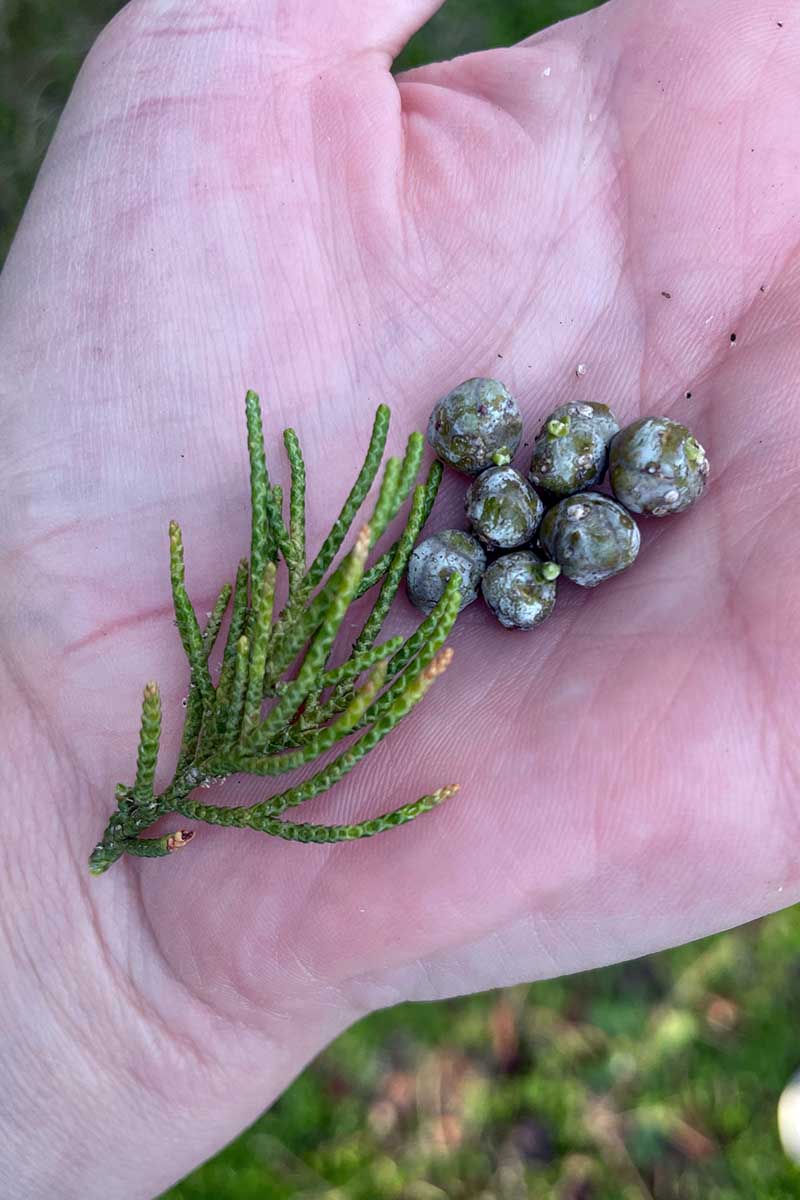
If you eat a lot of juniper berries in one sitting, regardless of the species, it can make you sick. Don’t gorge yourself once you’ve harvested a bunch.
If you’re harvesting the cones to try to propagate a tree or for decorative purposes, the species isn’t important with regards to potential toxicity.
You should also keep in mind that there are some cedars and cypresses out there that look like junipers, but aren’t. The berries are the key to determining what species you’re dealing with.
Cypresses don’t produce small blue berries. Cedars have angular blue ones that may come to a point. Juniper berries, on the other hand, are round and blue.
Neither cypresses nor cedars smell distinctly pine-like, as the fruits from a juniper do.
You might want to read our guide to eating juniper berries for more information on identifying the species and how to use the fruits.
How to Identify a Ripe Berry
You can’t eat or plant unripe berries, so it’s important that you know how to identify the ones that are ripe.
They can take up to three years to mature, depending on the species, and each tree or shrub will have berries of varying ripeness because they don’t all form and ripen uniformly.
The easiest way to tell if a berry is ripe is to tug it. It should give easily. You can even shake a juniper and the ripe ones will fall to the ground. If a berry resists, it’s probably not ready.

Most species have fruit that develops into some shade of blue, though some can be nearly white and others are practically indigo when ripe.
That’s why color isn’t a reliable indicator, unless you know which species you’re dealing with and what color the ripe fruits are.
You can also give the berries a little squeeze. They should feel plump with a little give. They won’t be as soft and juicy as, say, a blueberry, but they will have a definite give to them. Unripe ones feel firm and solid.
Many guides recommend harvesting in the fall and winter, and this is the most reliable time to find ripe fruits. But you can technically harvest year-round, depending on the species.
Be aware, however, that lots of birds and mammals like to eat them, so if you wait too long, they’re likely to get to them first. Fully ripe fruits may also fall off the tree before you can use them.
Don’t pick ripe berries up off the ground unless you laid a tarp there yourself, and shook the tree to make them fall.
The exception to all this is if you’re planning to make gin the traditional way, rather than flavoring a base like vodka that has already been distilled. In that case, you want to wait until the cone is fully formed and mature in terms of size, but still green. J. communis is the species typically used to produce gin.
How to Harvest
Before you start, ensure that you are foraging in safe areas away from roads, and only collect from plants that have not been sprayed with chemicals.
Technically, you can just lay a tarp down and shake that juniper tree until it gives up the goods. But this can knock unripe fruits off as well, depriving you and the fauna who eat them of future harvests. Better to hand pick the berries you want.
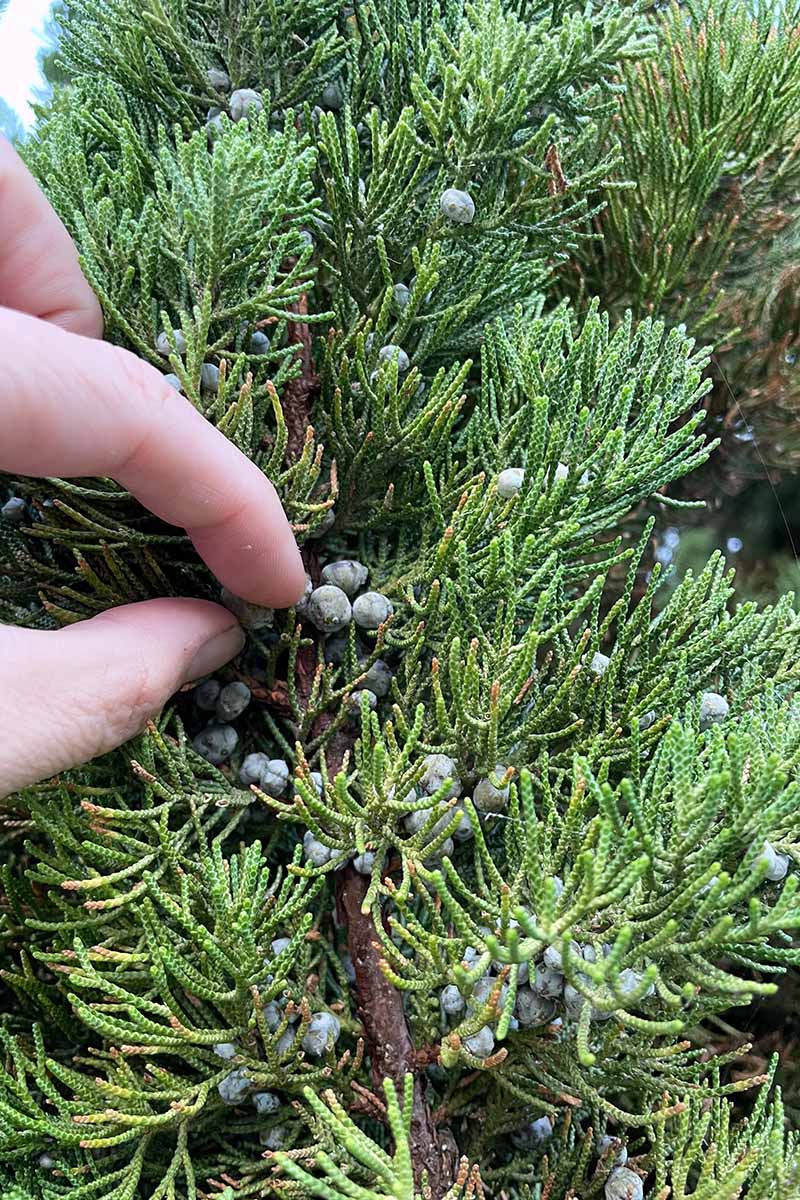
To do this, don some thick gloves and a long-sleeved shirt. Some junipers have soft scaly needles, but the same plant can also have spiky, sharp needles. You don’t want to get stabbed during your foraging adventures, so suit up.
That said, if you happen to be out wandering about and come across a juniper you can positively identify, even if you’re not appropriately adorned, you can carefully and safely pull the fruit off the plant. It just takes a little extra time and care.
Gently tug away any berry that looks ripe. It helps to have a basket or foraging pouch so you can keep your hands free.
Something water-resistant that attaches to your belt and has a wax lining, like this pouch made by Asenie, is ideal. It’s available on Amazon.

Asenie Waxed Canvas Foraging Bag
If you intend to use the wild yeast that covers the berries for home fermenting (that’s the powdery bloom you see), you might want to use a plastic or cotton bag so the yeast doesn’t get rubbed off.
Preservation and Storage Tips
You can dry the fruits to make them last longer, but be aware that this reduces the flavor.
To dry, wash them first if you wish, and place them in a food dehydrator or in a single layer on a cookie sheet in the oven at the lowest setting.
Leave the fruits to dry until they are hard and dry, much like a peppercorn with a slightly leathery skin.
Place in a resealable jar and store in a cool, dry spot out of the light.
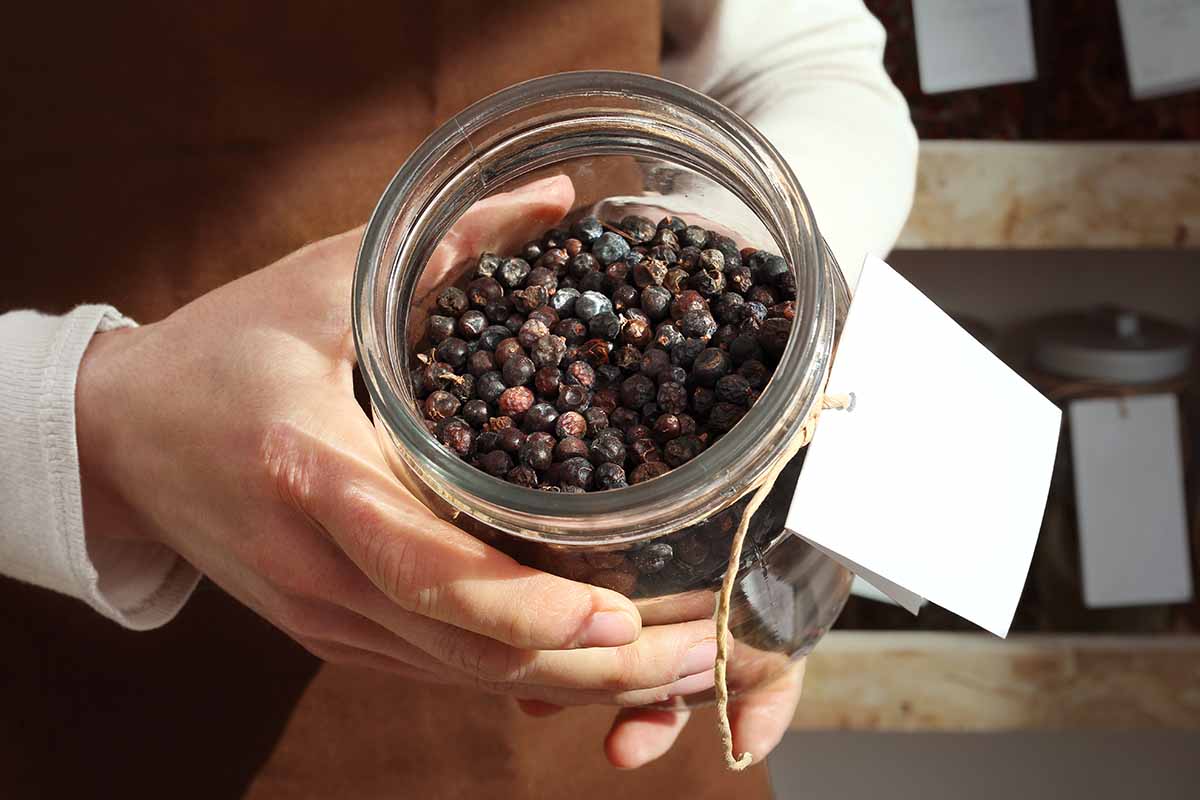
Otherwise, you can just place the fresh fruits in a container. Only fill it about halfway to allow for some airflow.
Even better, use a container that doesn’t seal entirely but allows the air to flow. I like to use canning jars with a few holes poked in the lids.
This should also be placed in a cool, dry place without exposure to direct sunlight.
Dried fruits can last for years in a sealed container. Fresh fruits can last a year, if stored properly.
If you’re looking for ways to use up your harvest, you might want to read our guide to using juniper berries.
Perfect Your Juniper Harvest Technique
The trick to harvesting juniper berries is knowing the right time to take the plunge. Now you have the info you need to do the job right.
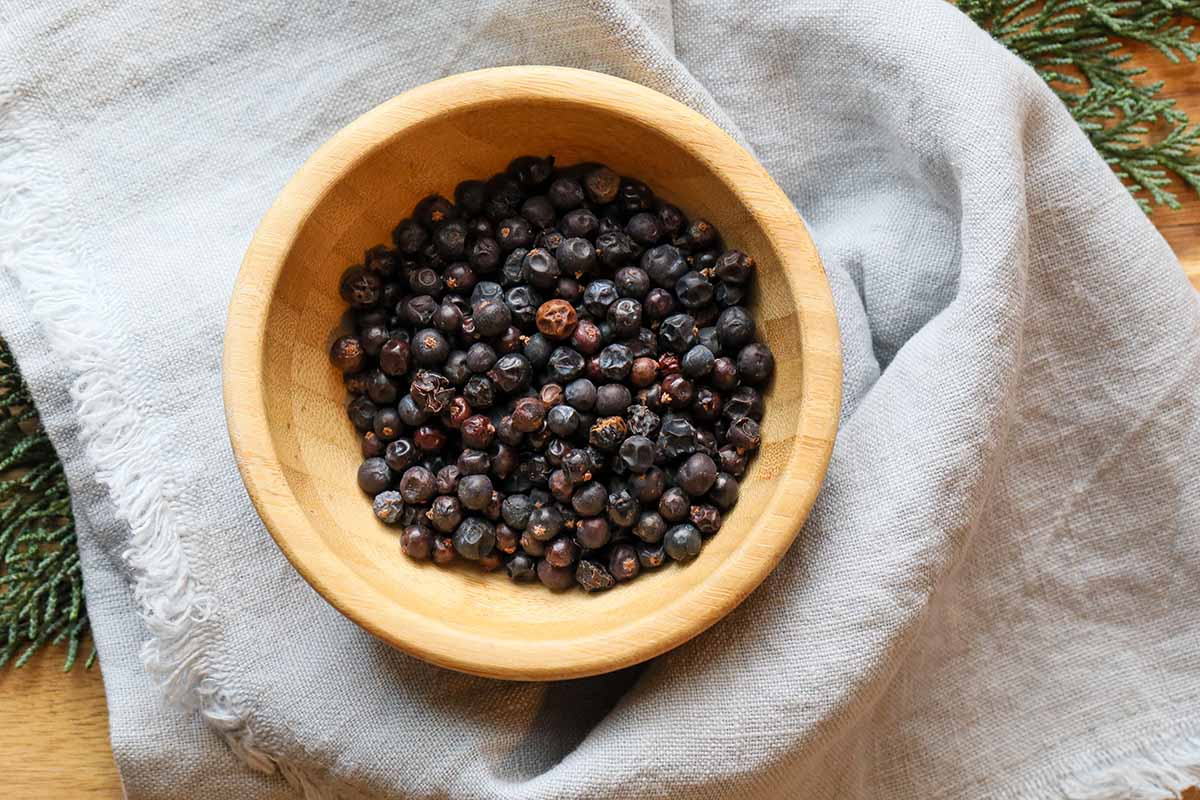
How do you intend to use your harvest? Let us know in the comments section below!
There is a lot more to know about junipers, from growing them in your own garden to using the plants medicinally. Check out some of our other guides next if you found this one helpful, starting with these:

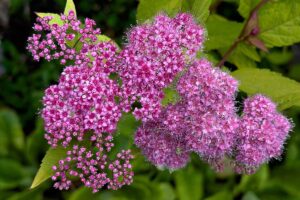
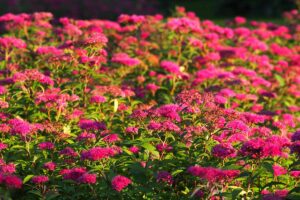
I will be trying these out in recipes for beef pot roast particularly Italian dishes. Hoping they can be substitution for peppercorns as well. I have two trees in my backyard, it’s a cold day in November and the berries are a beautiful blue. Will leave most for the Cedar Wax Wings in the spring.
That sounds delicious, let me know how it goes! You can definitely substitute them for whole peppercorns. They can’t be ground like peppercorns, though. They’re too resinous. Enjoy!
Here in South Central Missouri we have Juniperus Virginiana and I have been testing out infusing the berries in rum (gin). It’s not quite the same as the classic European varieties, but it’s recognizable as gin.
Hi Clyde, that’s awesome; thank you for sharing! Is the flavor less floral? More bitter? I made gin using Juniperus occidentalis this winter. It was good, but like you say, not like a classic gin. It’s interesting to play around with, and I’m hoping to find the right combination that creates a delicious, if not classic, flavor.
Hello and an immense “Thank You” for your very informative post and photos. Juniperus bermudiana L.is a species that offers beautiful berries. Can you offer specific comments on this species? Most Grateful!
Hey there! I don’t have any personal experience with this species myself. I agree with you, the berries are beautiful and apparently particularly tasty. You’ll have to let me know if you are able to chat with anyone who can give you some firsthand experience. I’m curious to learn more.